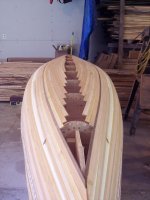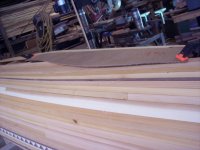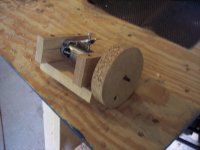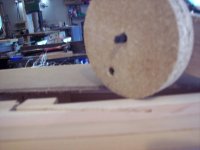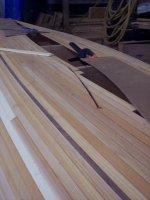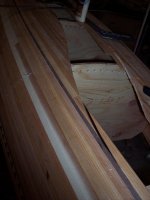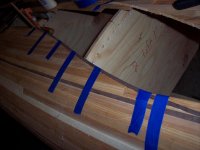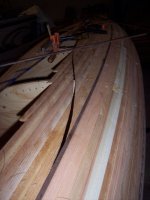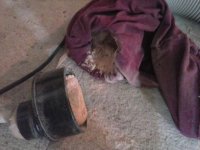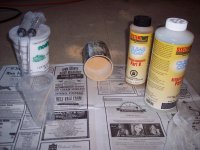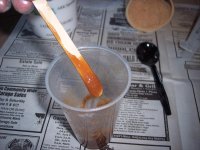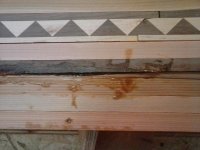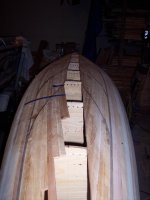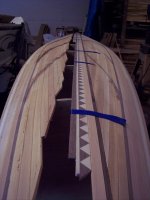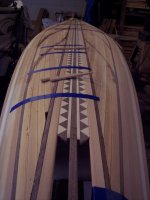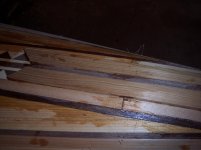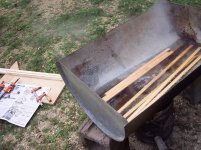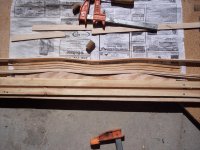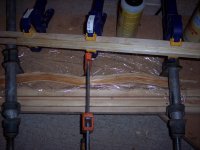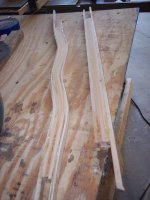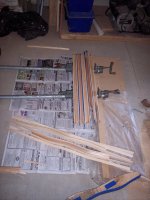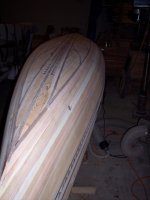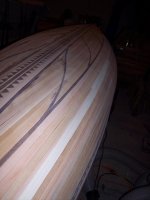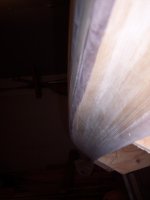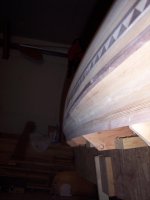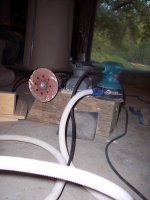No Title
Nearly two weeks. Been busy IRL, so not so much canoe work.
Did get most of the stripping done, and have pulled all the fishline. Boy, she is starting to look like a canoe! still have a hole in the bottom, as I have something special planned there.
But first, I have one more thing to do to the part of bottom that I have already stripped. Got templates and a router jig (real router is way too powerful/awkward for this job, as I found out the hard way.)
Cutting this slot is not going well. I think part of the issue is that my router bit is very dull. (need to replace)
The idea is that I then slip in a 1/4" walnut strip, and presto! pretty pattern. Any other thoughts on how to cut such a slot? I really don't want to give up that design element.
Also did a test glue-up with my first bit of Cabosil, just to see how it would handle. That stuff is going to be handy! The container says "Strength: Good, Sanding: Poor." Is this something I have to watch out for? Will I be able to sand squeeze-out and drips?
Nearly two weeks. Been busy IRL, so not so much canoe work.
Did get most of the stripping done, and have pulled all the fishline. Boy, she is starting to look like a canoe! still have a hole in the bottom, as I have something special planned there.
But first, I have one more thing to do to the part of bottom that I have already stripped. Got templates and a router jig (real router is way too powerful/awkward for this job, as I found out the hard way.)
Cutting this slot is not going well. I think part of the issue is that my router bit is very dull. (need to replace)
The idea is that I then slip in a 1/4" walnut strip, and presto! pretty pattern. Any other thoughts on how to cut such a slot? I really don't want to give up that design element.
Also did a test glue-up with my first bit of Cabosil, just to see how it would handle. That stuff is going to be handy! The container says "Strength: Good, Sanding: Poor." Is this something I have to watch out for? Will I be able to sand squeeze-out and drips?

